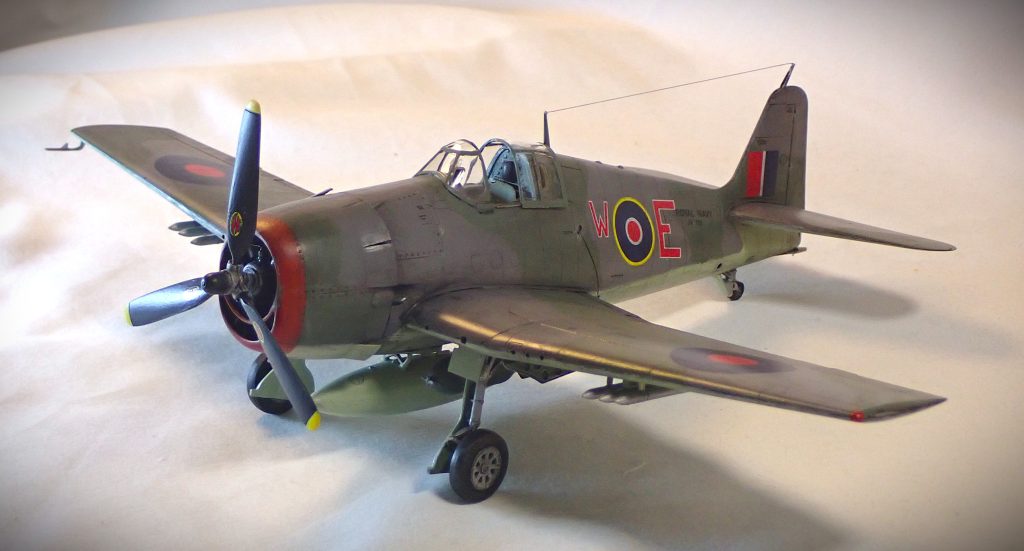The Grumman F6F Hellcat resembled the F4F Wildcat in many ways but it was a totally new design. The Hellcat was larger than the Wildcat with a more powerful Pratt & Whitney R-2800-10 Double Wasp radial engine with 2000hp. The F6F Hellcat was fast-tracked in 1942 as an intended solution to out-perform the Zero of the Imperial Japanese Fleet. Production began in early 1943 and the Hellcat was in action with the USN by September. The Hellcat was designed as a carrier-based fighter/bomber with excellent handling characteristics for take-off and landing. It was a single-seat single engine low cantilever wing with retracting tail-dragging gear.
Britain secured a batch of Hellcats in 1943 under the Lend Lease act with 252 of the F6F-3 being delivered from mid-1943 to the FAA who initially designated it the Gannet I but later Hellcat F Mk.I in line with the new policy of keeping American names for the sake of confusion. A further 930 F6F-5 were assigned in late 1943 with the FAA designation Hellcat F Mk.II.
Standard armament consisted of six 0.5in Browning, three per wing, with hard points for drop tanks, 500lb bombs or RP3 rockets. The wings folded hydraulically using the Sto-Wing system folding back and rotating to sit upright to the fuselage. Similarly, the wider spaced main gear retracted lengthways rotating 90 degrees to stow under the wing joint allowing better stability.
The FAA received the first batches in June 1943, and the type entered squadron service from July to October. The first squadrons were training and evaluation with 800 NAS being the first operational squadron aboard HMS Emperor. The squadron took part in the initial attacks on the Tirpitz escorting Barracudas in Norway. Another four squadrons operated in the Med. The Hellcat eventually equipped 18 FAA Squadrons, including the four training units, on escort carriers in the three main theatres of Atlantic, Mediterranean and Pacific.
The Hellcat F Mk.II commenced delivery from May 1944 until the end of the war. The improved version had the more powerful Pratt & Witney R-2800-10W giving 2200hp. A small number were equipped with cameras and used as photo-reconnaissance roles with the designation Hellcat FR Mk.II. In the Med and Atlantic the FAA Hellcats were faced with land based enemy aircraft so did not get as much opportunity as their RAF counterparts. The Pacific theatre gave more opportunity for dogfights. Indeed, 1844 NAS of the BPF on HMS Indomitable was the highest scoring Hellcat unit with 32.5 kills.
FAA Hellcats were retired at the end of WW2 as was the case with most Lend Lease aircraft. One of the terms for Lend Lease was if the aircraft was not paid for or returned to the USA then it must be destroyed. Many were just pushed into the ocean off the carriers. Two Hellcat squadrons retained their Hellcats only to be disbanded in 1946.
There are a small number of survivors relatively speaking. Of the 12,275 produced only 26 are in existence. In the USA there are eight airworthy examples with another six being restored. Eleven are on static display around the country. Only one exists in the UK, an F6F-5 or Hellcat F Mk.II KE209, at the FAA Museum at Yeovilton.
